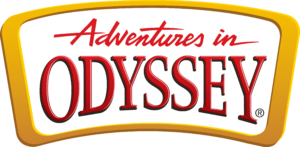Back in 1984, movie violence was ratcheting ever upward—even in films with a PG rating. A nasty little beastie got baked in a microwave and exploded in Gremlins, for instance, and an unfortunate sacrificial victim got his still-beating heart ripped out in Indiana Jones and the Temple of Doom.
The common denominator in both movies? None other than Steven Spielberg, who produced the first and directed the second.
Scenes like those had some cultural observers clamoring for stricter ratings—so much so that Spielberg himself eventually suggested an intermediate rating between the PG and R. In a 2008 interview with Vanity Fair, Spielberg reflected on the controversy:
The story of that was, I had come under criticism, personal criticism, for both Temple of Doom and, you know, Gremlins, in the same year. I remember calling Jack Valenti [then the president of the Motion Picture Association of America] and suggesting to him that we need a rating between R and PG, because so many films were falling into a netherworld, you know, of unfairness. Unfair that certain kids were exposed to Jaws, but also unfair that certain films were restricted, that kids who were 13, 14, 15 should be allowed to see. I suggested, "Let's call it PG-13 or PG-14, depending on how you want to design the slide rule," and Jack came back to me and said, "We've determined that PG-13 would be the right age for that temperature of movie." So I've always been very proud that I had something to do with that rating.
And so it was that the new, more restrictive rating came into play in U.S. theaters. Which brings us to the subject at hand today: Red Dawn.
Red Dawn, a movie about a group of Colorado teenagers repelling Russian invaders, was the first film to receive the new rating when it landed in theaters back on Aug. 10, 1984. This week, a remake—this time substituting North Korean attackers taking over Spokane, Wash.—parachutes into multiplexes across the country. And that gives us an opportunity to compare the two and consider what, if anything, has changed in the last 28 years when it comes to the PG-13 rating.
 I saw and reviewed the new version of the film. Afterward, I went back and watched the original for the sake of comparison. Here are my thoughts:
I saw and reviewed the new version of the film. Afterward, I went back and watched the original for the sake of comparison. Here are my thoughts:
My best friend, Joe, and I saw the 1984 version when it first came out—three days after my 14th birthday. Like most teenage boys, we didn’t know that there was a controversy surrounding the film’s violence. Mostly, we just wanted to see Patrick Swayze and Charlie Sheen let the Russians know that if they were going to land in our country, they were going to pay.
Others, however, were paying close attention to the film—very close, Plugged In-style attention, actually. That’s because they believed the violence in Red Dawn likely should have garnered a more restrictive R rating. Their argument? Some went so far as to say that the movie was actually the most violent ever made up to that point in terms of its overall body count. (The National Coalition on Television Violence calculated that it depicted 134 acts of violence an hour, or 2.23 per minute.)
Watching the films back-to-back, I can attest that both are in fact saturated with war-related violence and imagery. And both have a high body count. That said, the films are also pretty different in the way that they depict that violence.
The original, while perhaps not utterly believable, nevertheless feels more realistic in its depiction of the awful reality of war. Sure, Swayze and Sheen unleash all manner of havoc upon nameless, faceless Russian lackeys via machine guns and rocket-propelled grenades. Much more sobering, however, is a scene in which the young patriots watch through binoculars as Russian soldiers brutally execute a row of American POWs—a chilling reprisal for the young guerillas’ actions. Elsewhere in the film, a character who has lost his father devolves into a hardened killing machine, so much so that he coolly executes one of his friends with a machine gun when it becomes apparent that he’s a turncoat.
As the story progresses and the violence ratchets up, the film suggests that it takes an awful toll on Swayze’s and Sheen’s characters. We also hear about atrocities such as rape and cannibalization. In the end, despite loads of Rambo-like action in defense of America’s freedoms, we’re left with a real sense of the horrific cost of war.
 The new film is similar … and very different. I suspect the body count is just as high, if not higher. A new group of adolescents, this time led by an Iraq War vet played by Chris Hemsworth, repeatedly raid besieged Spokane with machine guns, grenades, rocket launchers and even C4 explosives. Result: lots and lots and lots of dead North Koreans.
The new film is similar … and very different. I suspect the body count is just as high, if not higher. A new group of adolescents, this time led by an Iraq War vet played by Chris Hemsworth, repeatedly raid besieged Spokane with machine guns, grenades, rocket launchers and even C4 explosives. Result: lots and lots and lots of dead North Koreans.
Unlike the original Red Dawn, however, there’s a lot less emphasis on the horrors of war. Don’t get me wrong, scores of people do die—including some of the heroes. But in comparison to the first film, this one feels more like a video game and less like a statement about the terrible toll of armed conflict. The result is a movie that might actually be more violent—in terms of explosions, firefights and body count—but one that simultaneously and paradoxically feels more sanitized and detached from any significant statement about the nature of war.
Apart from these two movies’ violence, the issue of profanity is revealing as well. In the original, God’s and Jesus’ names are abused about 20 times—compared to about half-a-dozen combined misuses in the remake. On the other side of the coin, the original only has two uses of the s-word—compared to more than 25 in the remake, plus nearly 25 other crudities.
So what are we to make of this comparison?
For starters, even though these two films have the same rating, they come from different times that reflect different cultural sensitivities. As such, they felt dramatically different to me. Same rating, different overall vibe.
Today it seems as if our society is “fine” with boatloads of violence—as long as it’s scrubbed of anything too graphic or harsh. (Think The Avengers or The Hunger Games.) We’re also pretty desensitized to s-words and f-words these days—but not necessarily to abuses of Jesus’ name, racial slurs and derogatory punches at homosexuality.
I can’t say for sure, but I suspect that if the original version were re-released and re-rated today, its unflinching depiction of wartime atrocities would likely earn it an R rating. Likewise, I wonder if the version that came out this week would have still received a PG-13 if it had been released in 1984, or whether its higher quantity of profanity would have pushed it into R-rated territory.
All of that illustrates the fact that ratings, even those created by an organization that’s ostensibly trying to help parents and families make informed decisions, are inherently subjective things. That was true in 1984. And it’s still true 28 years later.



Recent Comments